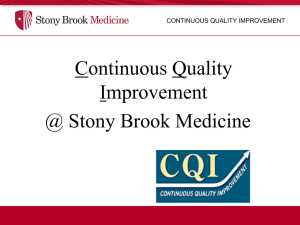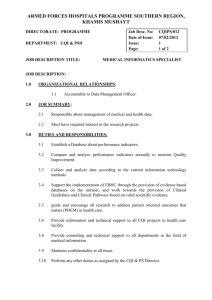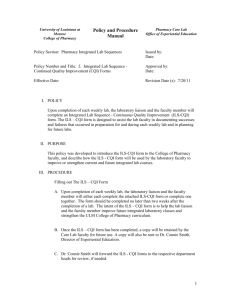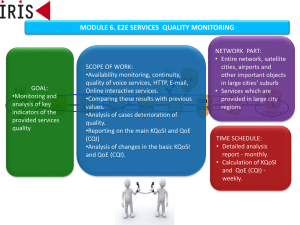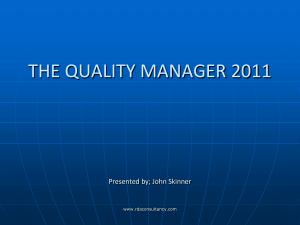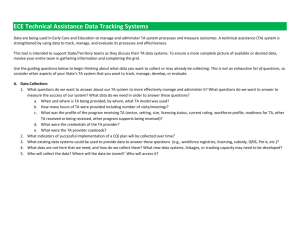2. Proposal
advertisement
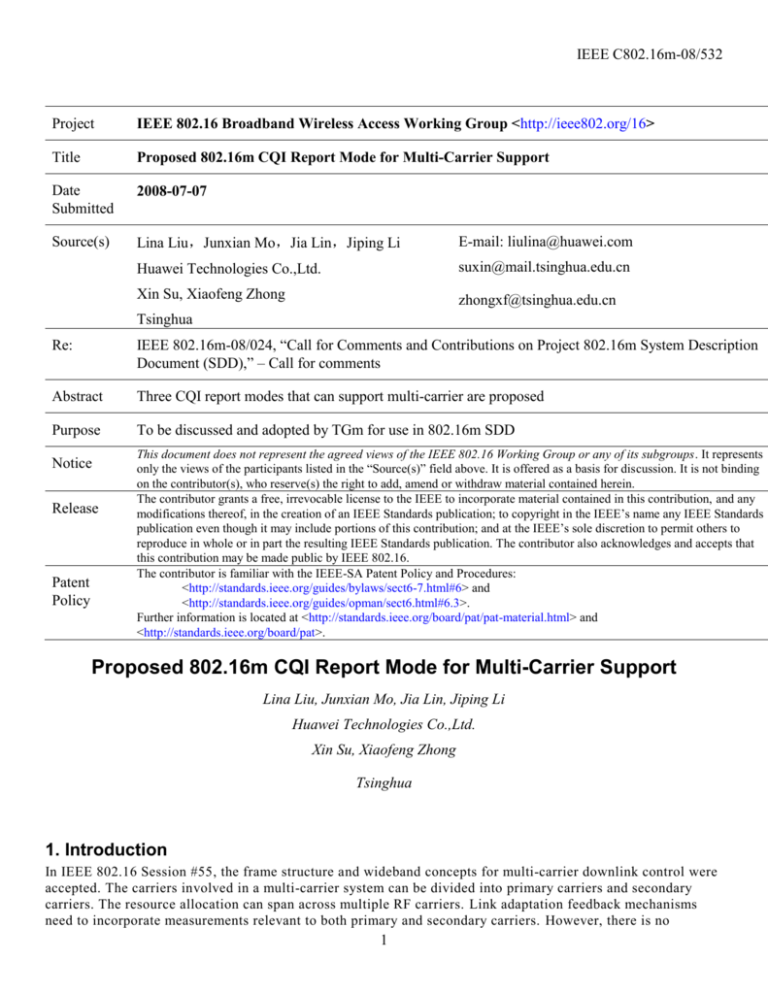
IEEE C802.16m-08/532 Project IEEE 802.16 Broadband Wireless Access Working Group <http://ieee802.org/16> Title Proposed 802.16m CQI Report Mode for Multi-Carrier Support Date Submitted 2008-07-07 Source(s) Lina Liu,Junxian Mo,Jia Lin,Jiping Li E-mail: liulina@huawei.com Huawei Technologies Co.,Ltd. suxin@mail.tsinghua.edu.cn Xin Su, Xiaofeng Zhong zhongxf@tsinghua.edu.cn Tsinghua Re: IEEE 802.16m-08/024, “Call for Comments and Contributions on Project 802.16m System Description Document (SDD),” – Call for comments Abstract Three CQI report modes that can support multi-carrier are proposed Purpose To be discussed and adopted by TGm for use in 802.16m SDD Notice Release Patent Policy This document does not represent the agreed views of the IEEE 802.16 Working Group or any of its subgroups. It represents only the views of the participants listed in the “Source(s)” field above. It is offered as a basis for discussion. It is not binding on the contributor(s), who reserve(s) the right to add, amend or withdraw material contained herein. The contributor grants a free, irrevocable license to the IEEE to incorporate material contained in this contribution, and any modifications thereof, in the creation of an IEEE Standards publication; to copyright in the IEEE’s name any IEEE Standards publication even though it may include portions of this contribution; and at the IEEE’s sole discretion to permit others to reproduce in whole or in part the resulting IEEE Standards publication. The contributor also acknowledges and accepts that this contribution may be made public by IEEE 802.16. The contributor is familiar with the IEEE-SA Patent Policy and Procedures: <http://standards.ieee.org/guides/bylaws/sect6-7.html#6> and <http://standards.ieee.org/guides/opman/sect6.html#6.3>. Further information is located at <http://standards.ieee.org/board/pat/pat-material.html> and <http://standards.ieee.org/board/pat>. Proposed 802.16m CQI Report Mode for Multi-Carrier Support Lina Liu, Junxian Mo, Jia Lin, Jiping Li Huawei Technologies Co.,Ltd. Xin Su, Xiaofeng Zhong Tsinghua 1. Introduction In IEEE 802.16 Session #55, the frame structure and wideband concepts for multi-carrier downlink control were accepted. The carriers involved in a multi-carrier system can be divided into primary carriers and secondary carriers. The resource allocation can span across multiple RF carriers. Link adaptation feedback mechanisms need to incorporate measurements relevant to both primary and secondary carriers. However, there is no 1 IEEE C802.16m-08/532 description of how multi-carrier users report channel quality information. This contribution considers the CQI report to support multi-carrier feature as currently defined in SDD. 2. Proposal A multi-carrier MS shall be connected to only one primary carrier and the primary carrier may dynamically assign resources across multiple secondary RF carriers. The primary carrier will use the CQI of the secondary carriers to decide which secondary carrier shall be used for new traffic. The SDD does not current describe how the MS shall report CQI for secondary carriers? If the MS reports the CQI of all secondary carriers, even though there is no traffic in these secondary carriers, the CQI overhead will be high. If the MS just reports the CQI of the secondary carriers which are used for traffic, the BS can not efficiently decide which secondary carriers should be used for new traffic. There are three potential CQI reporting modes for multi-carrier: Report CQI for a subset of carriers A subset of carriers which the MS reports CQI can be negotiated between the MS and BS. The reported CQI includes wideband CQI and the sub band CQI. The subset is a portion of all carriers which are supported by the MS. The subset can be updated periodically or event triggered. The algorithm for deciding the subset is outside the scope of this proposal. In addition, the algorithm for determining which information is wideband CQI and which information is sub band CQI if outside the scope of this proposal. This CQI feedback mode can reduce overhead, but the BS can not schedule the traffic efficiently to the carriers outside of the subset. Report CQI for all carriers The MS reports the CQI of all the carriers which are supported including wideband CQI and sub band CQI. Then, the BS can schedule the traffic efficiently according to the CQI. However, the CQI overhead is high. The CQI can be reported periodically or event triggered just as is commonly done. Report wideband CQI for all the carriers and report sub band CQI for a subset of carriers In this mode, the MS reports the wideband CQI of all the carriers which are supported and reports the sub band CQI of a subset of carriers. Also, the subset can be negotiated between the MS and BS. The subset is a portion of all carriers which are supported by the MS. The BS can update the subset according to the reported wideband CQI. This CQI feedback mode is a compromise of overhead and efficiency. [Proposed text] [Insert the following sub-clause in sub-clause 11.6.4] 11.6.4.x CQI feedback mode for multi-carrier The following three CQI feedback modes can be used for multi-carrier support: Report CQI for a subset of carriers Report CQI for all carriers Report wideband CQI for all carriers and report sub band CQI for a subset of carriers 2

